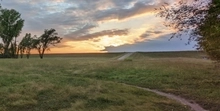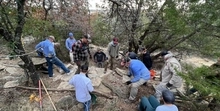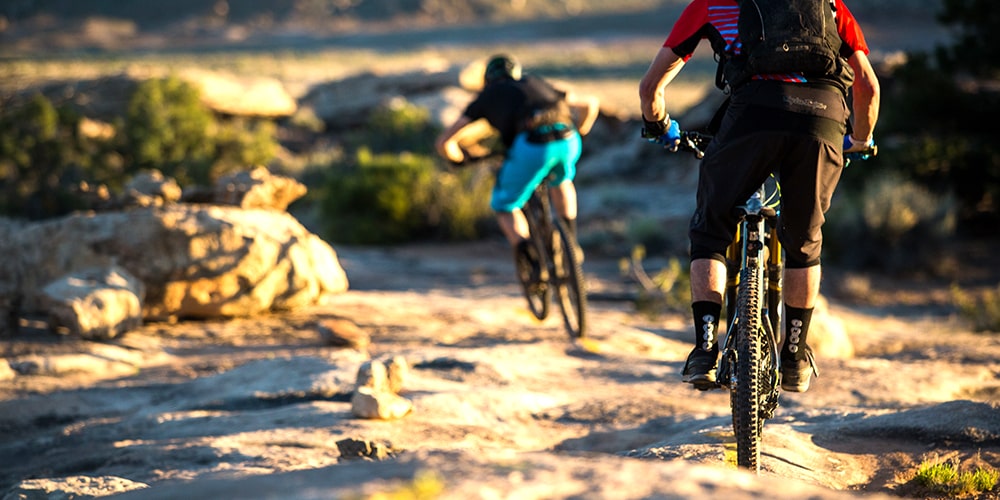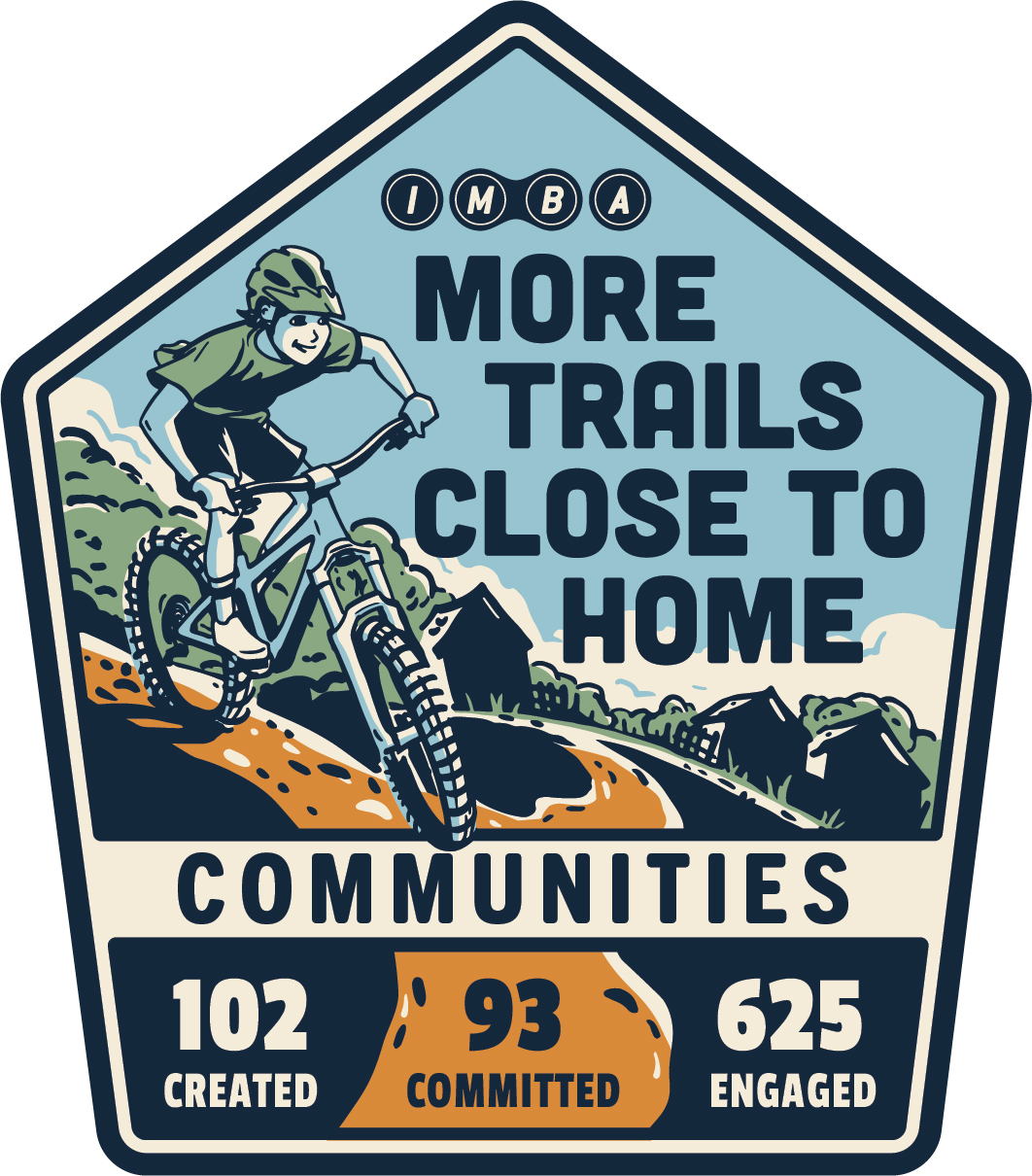Powering Community Partnerships
In this second edition in our series on mountain bike friendly federal land designations, we’ll explore the evolution of National Monument designations with mountain bike access and hear from local advocates about their biggest takeaways on what we can do to ensure mountain bikers are included in land designation proclamations.
National Monuments - A History Lesson
A national monument is a landscape or historical place that's been protected either by Congress through legislation or by the president through the use of the Antiquities Act of 1906. National Monuments are designated to preserve objects of antiquity such as natural habitat, objects of historic and/or scientific interest, or memorials and historic structures. Sometimes called a “presidential monument,” this type of designation can also be used to prevent an area from potential harms such as commercial development.
National Monuments have been around for a long time… even longer than mountain bikes or mountain bike advocates. Devil’s Tower, or Mato Tipila, the Lakota name commonly translated as Bear Lodge, was the first monument designated by Teddy Roosevelt in 1906.
So, why do National Monuments matter to mountain bikers?
Mountain bike trails are not “objects of antiquity.” (Nor are most mountain bikers…ha!) Instead, trails increase accessibility. Trails create and conserve approved routes for people to experience and appreciate these protected landscapes and features.
National Monuments also matter to mountain bikers because they offer a potentially mountain bike friendly alternative to other public land designations. Designations such as National Parks often limit mountain biking, and Wilderness prohibits mountain biking across the landscape.

Mountain Biking in National Monuments
Naturally, inclusion of mountain biking as an acceptable activity in this type of land designation evolved along with the mountain bike advocates and enthusiasts living in the areas. The Berryessa Snow Mountain National Monument protects 330,780 acres in northern California near urban centers, providing riding opportunities like Fiske Peak Loop and Cache Creek Ridge Trail for National Interscholastic Cycling Association (NICA) teams in the area’s NorCal league, one of NICA’s largest leagues. In 2015, NICA was the sole recreation voice welcomed to testify on behalf of mountain bikers at a public meeting regarding the designation. Further south, the San Gabriel Mountains National Monument designated in 2014 protects some of the most rugged and remote riding accessible from the Los Angeles area, thanks to the advocacy of Steve Messer and the Concerned Off-Road Bicyclists Association. To the east in the four corners region of Arizona, New Mexico, Utah and Colorado, the Canyons of the Ancients National Monument hosts the largest number of inventoried archaeological sites in the United States. Rides including the Canyons of the Ancients Loop and Sand Canyon Trail takes mountain bikers past pueblos, kivas and other artifacts to observe and appreciate. And much further east, Maine’s Katahdin Woods & Waters National Monument was made possible through a private land donation that now protects the Wassataquoik Overlook Trail and myriad bikepacking opportunities.
How have national monument designations evolved to protect trails and allow mountain biking? Monument proclamation language has always been an important factor. Get on your word-smithing hats and let’s dig in:
“Not Restricted.”
The least desirable term for mountain bikers, simply not being listed as a restricted activity conveys minimal inclusion. Most common in the oldest National Monuments designated before mountain biking evolved in the 1970s, National Monuments that don’t explicitly restrict or outlaw mountain biking inexplicitly allow it. BUT, it feels a bit like not not being invited to a party. Additionally, restrictions in monument designation land management can be changed over time.
For example, the Black Canyon of the Gunnison National Monument in Colorado (designated by Herbert Hoover in 1933) can be considered the first national monument that allowed mountain biking because people living in the area were among the first to innovate into riding on singletrack in the 1970s, and, it was a beautiful, natural area that didn’t have any signs that said “no mountain bikes.” So, naturally, mountain bikers rode there. However, when it was designated as a National Park in 1999, mountain bike restrictions were introduced and enforced. Today, mountain bikers can travel the South Rim Road and view various overlooks and trailheads, and experience plenty of mountain biking outside of the park. Mountain biking is not allowed on multi-use trails within.
Inclusion.
Inclusion of mountain biking in National Monuments arose as a direct result of mountain bikers asking for it. IMBA has been at the table since the late 1980s and early 1990s with local mountain bike advocates, lawmakers, and land managers to support and inform land designation language that allows mountain biking, and can even support building new trails open to mountain bikes.
One example of a National Monument that explicitly allows mountain biking on natural surface trails is Fort Ord National Monument, designated by President Barack Obama in 2012. Ever heard of the Sea Otter Classic? Thanks to IMBA and the Monterey Off-Road Cycling Association, the monument’s proclamation specifically mentions the use of bicycles as an ongoing and appropriate method of experiencing and exploring the landscape. It highlights how visitors can explore the Fort Ord area’s scenic and natural resources on trails, including those suitable for mountain biking.
Protecting Trails for Monterey and Sea Otter
Protection.
In 2022, the Biden Administration designated the Camp Hale and Continental Divide National Monument. Beginning with more than a decade of statewide organizing to support the CORE Act, IMBA and local mountain bike organizations like the Roaring Fork Mountain Bike Association built relationships that resulted in trust and understanding. These relationships ultimately informed the protective language included in the Camp Hale-Continental Divide proclamation. IMBA and local advocates reiterated recommendations to the Biden Administration to preserve all existing access to mountain bike areas, and to protect specific trails that were previously identified through mountain bike-friendly Recreation Management areas. The administration applied those recommendations to the designation, ensuring that Camp Hale not only protects the landscape and history, but makes it clear that mountain biking is protected as an important part of Colorado’s outdoor traditions and recreation economy. The proclamation language reflects a thoughtful approach to balancing conservation objectives with recreational access.
Camp Hale Becomes a National Monument
One Trail Champion’s Takeaways
For Mike Pritchard, Executive Director of the Roaring Fork Mountain Bike Association (RFMBA) in Colorado, and career mountain bike advocate, mountain bike trail protections included in the Camp Hale-Continental Divide National Monument represent a small, but important, piece of the puzzle of protecting great places to ride. The biggest take-away is that mountain bikers have to be at the table, or we’re on the menu.
Pritchard shared the perspective that it takes time and commitment to earn a presence in the minds of land managers, local policy makers, and other outdoor recreation groups and businesses. When relationships are established, advocates can change the perception of mountain bikers among community leaders, conservation organizations, and even federal lawmakers. Mountain bike advocates who commit to understanding and participating in planning for local, regional, statewide, and federal policy and legislation access the bigger picture and build trust and acceptance in spaces where mountain bikers were once unwelcome.
The trust Mike Pritchard has earned working along advocates from other Colorado mountain mike organizations and IMBA allowed him to change RFMBA’s advocacy strategy from defense to offense. Widespread, exclusive wilderness designations were the primary conservation tool 15 years ago. Now, identifying and considering companion designations for certain areas in Colorado that balance protection of landscapes with outdoor recreation access can provide a more tailored conservation approach, like the one reflected in the Camp Hale proclamation.
From simply not being identified as a restricted activity, to inclusion as appropriate, welcome and even celebrated for full appreciation of an area, mountain biking doesn’t just end up in National Monument designations or any other land management strategy. It takes diligent, sometimes decades-long work by local mountain bike advocates to ensure access is protected.
Up Next: To continue your exploration, read more about Mountain Bike-friendly Land Designations in our blog on Recreation Emphasis areas (coming next week), or check out this blog on Public Lands from our friends at the Mountaineers.









